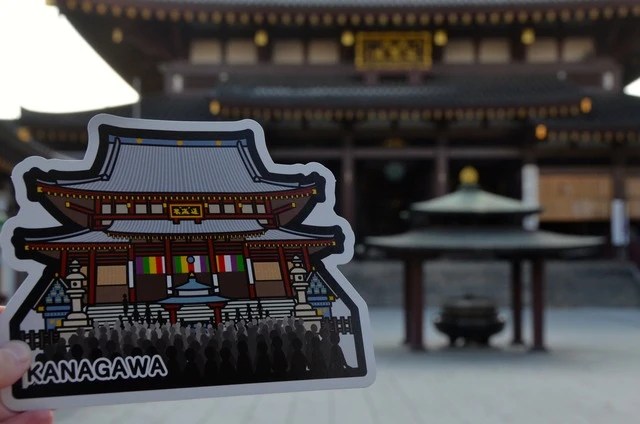Well hello there! I’m back from vacation, and plan to resume posting once a week at least, starting with a temple I visited during my travels, Kanagawa Prefecture’s Kawasaki Daishi!
The real name of this temple is Heiken-ji, and it is the headquarters of the Chizan School of Shingon Buddhist. It’s especially famous for hatsumode, the first shrine visit of the year, which is pretty impressive since most people visit a shrine, not a temple. It is nevertheless always extremely crowded New Years Day and the following few days.
I visited it when I had a chance to stay at a hotel close to Kanagawa Prefecture recently. It was late in the evening and hardly anybody was around, but it is a really nice place, and a pretty easy shot from Tokyo for those looking for a nice temple to visit, but don’t want to go as far as the temples and shrines of Kamakura. Check out information about it, and how to get there, here.

The sign for the temple in Kawasaki JR Station.

The main temple itself, plus postcard

I found the pagoda especially beautiful in the afternoon sun
I’m not a fan of crowds, so I’m glad to get the chance to visit the temple without anyone there! I was still able to get my calligraphy, however, even though it was after closing time.
I hope you get a chance to go again as well. Enjoy!












































